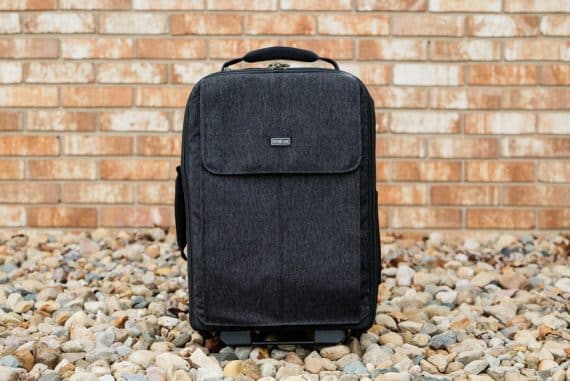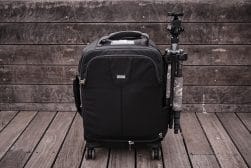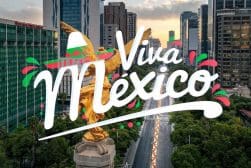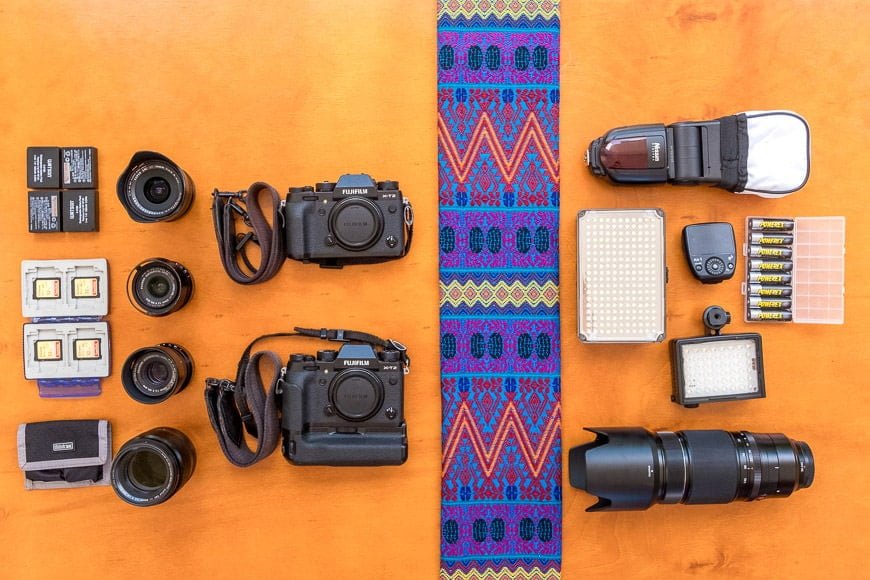
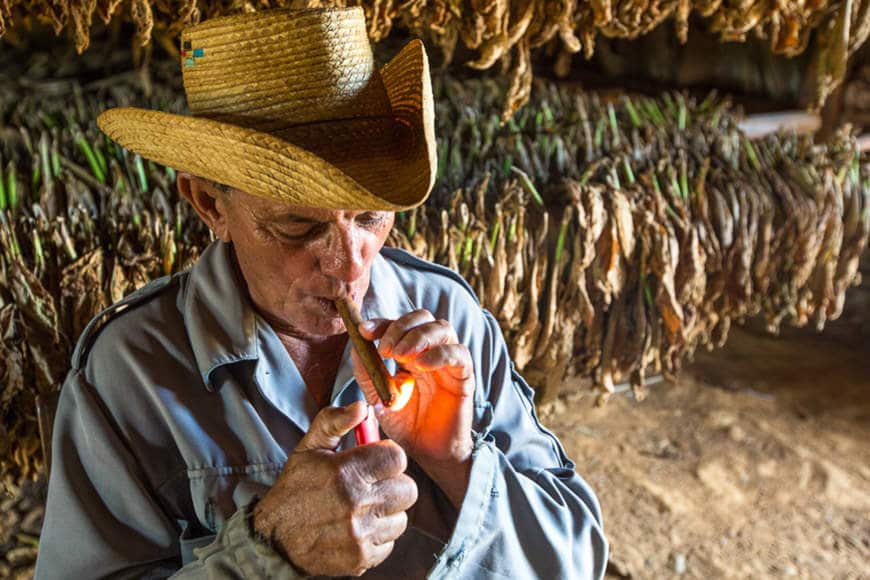



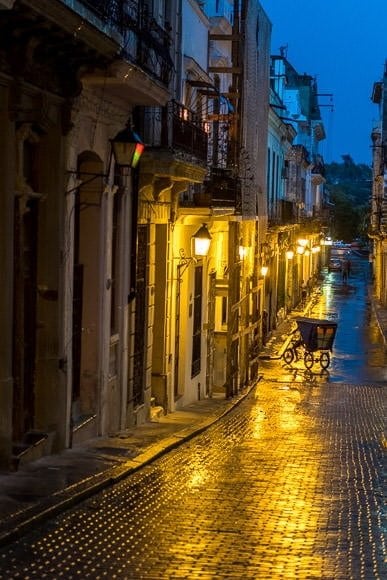



Michael Lewis
Travel | Last Updated: April 4, 2024
Shotkit may earn a commission on affiliate links. Learn more.
After 37 years as a photographer for newspapers, magazines, corporations and National Geographic, I still get excited about new technology and tools – and the next trip!
I’ve trekked in Nepal, been to the North Pole, crossed the Sahara with a camel caravan, photographed Dia de los Muertos in an indigenous community in the mountains of Chiapas, and witnessed Semana Santa in Guatemala.
I’m open to nearly anything that makes capturing great images easier. I started with Nikon film cameras, always flirted with Leica, and switched to Canon when it was time to be all digital. About a year or so ago, the mirrorless world started calling my name.
Today I am a happy Fujifilm convert, totally in love with the Fujifilm X-T2 and the lenses that go with it.
When I am using the X-T2, I feel like I have a bit of Canon and a bit of Leica in my hands. The kit is light, rugged, easy to use, and the files are a joy to edit.
The deciding moment was shooting Semana Santa in Antigua, Guatemala. I was using the X-T2 and my wife, Jennifer, was using the Canon 5D Mark III
. She needed a small video light to help with auto-focus in low light – I didn’t.
Although I have two different photography lives, the X-T2 works equally well with my travel/photojournalism work or my wedding/portrait work.
As I write this, my wife and I are closing the chapter on eight years of living on a Mexican island in the Caribbean, photographing destination weddings and doing commercial work for resorts. During our time here, we have visited much of Mexico, some of Cuba, Guatemala and Belize. We enjoy teaching photo workshop/tours in Chiapas and Guatemala, where we introduce people to vibrant indigenous cultures and traditions.
Soon, we will be based in New Mexico (it really is in the U.S.!), where I am going to continue my work with travel, doing environmental stories, teaching local seminars, and leading workshops in Mexico and Guatemala.
Here is how the gear breaks down, somewhat separated in the photo by the lovely textile from Guatemala. When shooting travel, or any non-wedding work, I carry two bodies, one with the Fujinon 23mm f/2 and the other with the Fujinon 50mm f/2
. I could work an entire day with just these two lenses and much of the time with only the 23mm.
These cameras can go through batteries quickly, so I always have four spare batteries, either Fuji or Watson (I can’t see any difference with performance). I have usually opted for the f/2 lenses instead of the f/1.2 or f/1.4 lenses (made by anyone). The increase in weight is not worth the extra f-stop to me.
I am partial to the Domke camera straps, but my wife likes the Spyder holster.
Depending on what I am shooting, I may add the Fujinon 14mm f/2.8 and the Fujinon 90mm f/2 to my LowePro Slingbag
. I might carry a small video light or the Nissin Di700A
and the Air 1
commander for remote firing. The Vello diffuser works well for softening the light, or I might use a Lastolite EZYBOX
if I know I will have time to light subjects. I have owned the Litepanels LP
Micro for several years and use it on occasion.
When it’s wedding day, I carry all of the previously mentioned equipment, but I’ll add the Fujinon 50-140mm f/2.8 OIS for some of the day. I don’t get to use the amazing 90mm, since we only have one and my wife has claimed it!
I love using the ThinkTank belt and two pouches that attach for an extra lens, cards, batteries, flash and Zeiss Lens Wipes
. We use a video light from Aputure for the reception. All of the lights are powered by rechargeable Powerex batteries
.
We use two SanDisk Extreme cards in our double slots in the X-T2
. Slot #1 has a 32 GB to record RAW and Slot #2 has a 16 GB recording JPEG.
All RAW files are copied to a Samsung 250 GB SS drive while in the field and then copied to Seagate 1 TB portable drives
when we return to the office.
Initial culling is done using PhotoMechanic and then the selects are imported to Lightroom, and edited on a 15” Apple Retina MBP or a 13” MacAir.
In both kits I always carry a chamois cloth that I buy from an auto parts store. I simply select the softest cloth they have and use it lightly on my bodies and lenses if they get damp. I like the Zeiss Lens Wipes for the lenses, which are protected by B+W neutral filters.
If I need a tripod (which I rarely use), we use a Manfrotto 290 xtra carbon fiber with a Kirk ballhead. I’ll generally stick it in a suitcase or carry it in a Ruggard light stand bag.
I always have a small Swiss Army knife and a Fisher Space Pen in my pocket. You can only do so much digital, so I make notes in a Moleskine.
Most of the time we use two rolling/backpack LowePro cases that we last purchased in 2009 (I’m not sure they are still available). They don’t have room for a laptop, but one will hold one photographer’s gear AND they fit in the overhead bins on small regional jets (RJ).
[Ed – see more of the camera backpacks.]
If we are traveling with our dog (he counts as a carry-on) and not traveling on small RJs, we use a discontinued rolling Pelican soft case that carries four bodies, all of our lenses and a laptop (whew – it’s really heavy).
We’ve replaced the wheels and a strap on it in the past few years (it’s 14years old), so I imagine a ThinkTank rolling camera bag is in my future. If their bags are as good as their pouches and belts, I’ll have no problem choosing ThinkTank.
I wonder if there will be room for a drone?

Check out these 8 essential tools to help you succeed as a professional photographer.
Includes limited-time discounts.





